Herein, find important thought nuggets for those planning a bikepacking trip to Oaxaca – appropriate bikes, following routes, camping beta, on-the-road hydration tactics, city water awareness, and more. If any of the information slips out of date, please let me know.
Want to meet up? When I’m in town, I’m generally available for a local, early morning ride with our dog Huesos. Drop me a line via Instagram!
When to go
- Best time of year: Oaxaca is a popular destination throughout the year, with November to February considered the high season for overseas visitors. Bear in mind that during the dry season (November to April/May), dirt roads become increasingly dusty as the months progress, streams can run dry, and temperatures soar, especially in the Oaxaca Valley and down by the coast. By March and April, it’s sizzling hot and the landscape becomes increasingly dull and brown, so I’d recommend heading for the mountains. In contrast, the rainy season (mid-May to October) brings lush countryside and much more bearable midday riding temperatures, but expect heavy rain in the afternoon and nightly downpours. Waterproofs or a poncho are a must. Thankfully, rain in the mountains of Oaxaca is rarely an all-day affair, unless there’s a storm system lingering on the Pacific coast or the Gulf of Mexico, in which case it can be rainy and overcast for a few days. All things considered, mid-October through January are probably my favourite times to ride here, as the landscape is still green, the heaviest rains have passed, and the temperatures aren’t yet oppressive. Within these months, November is perhaps the sweet post, and allows you to tie in a bikepacking trip with experiencing Día de Muertos (Nov 1-2). If this idea tempts you, be sure to book accommodation in advance as it’s especially busy over the week surrounding these dates (see below for more details).
- Dry season: Be prepared for high daytime temperatures (topping out at around 35c/95f in the city) and balmy nights. Humidity also increases towards the coast. Early starts are recommended, as is extra water capacity – at least 4 litres, depending on the route and time of year – and midday siestas are the way to go! A bandana can be useful, as the dirt roads can be very dusty when traffic passes, especially once the dry season is in full swing. I’d suggest heading for high country, where it’s considerably cooler, and sometimes there’s even a chance of rainfall. In terms of waterproofing, it’s still worth packing a lightweight waterproof jacket, as storms can still roll in.
- Rainy season: It’s worth bringing a poncho to wear around camp, which can double up for protecting your bike and its drivetrain from rusting at night. For the most part, the mountains drain well, but we’ve marked potential mud-clay trouble spots on routes that stick to the valleys. Rule of thumb: if it’s an area famous for pottery, it’s probably going to be bad! Storm systems aside, rains mostly come in the late afternoon or at night, so they don’t tend to get in the way of enjoying your days in the saddle. The rainy season has its charms, including epic skies, storm racing, and the chance to forage for mushrooms. The mountains can feel cold in the rainy season due to ambient humidity, so I recommend packing some extra layers. Mushrooms are most plentiful from July to September, though the season can extend into October and even November too. Check out Oaxacan mushroom guru Osvaldo Sandoval’s Instagram for ideas and inspiration.
- El Día de Muertos: Consider timing your trip around Oaxaca’s famous festival and ceremony, held in early November. Book accommodation in advance though, as the city is especially busy at that time of year and in the week leading up to it. Nearby Mitla and San Agustín Etla and also known to be interesting destinations for El Día de Muertos, and less commercialised than the city scene.
What bike?
The best bike is the one you have! But if you have some choice in the matter, here are some distilled thoughts. For a deeper dive, head on over here.
- Best bike: Depending on the route, a rigid mountain bike or a hardtail (2.3″ to 2.6″ tyres) is likely your best steed for general riding in Oaxaca, due to the mixed terrain, the extended climbs, and the often steep grades. In short, there’s little you won’t be able to ride here if you’re aboard a modern hardtail. Unless you’re hitting the big enduro trails in Ixtepeji, you won’t need more than a 100-130mm suspension fork. There, slack head angles are the name of the day! If you’re riding one of the more singletrack-orientated day rides or bikepacking routes, a dropper post is highly recommended too, as the trails can be very steep. For those aboard a ‘gravel bike’, I recommend running gearing that is comparable to that of a mountain bike, fit the widest tyres that you can (55mm or more), and expect to be jostled around at times. If you have an older mtb to hand, fear not. Valley rides are perfect for vintage 26inchers, spares are easy to come by, and the more adventurous pilots can certainly tackle some of the trails too! Whatever bike you choose, my main recommendation is to pack light, as there’s lots of climbing to contend with in Oaxaca, and the inclines are sometimes very steep, with pushing required.
- Punctures: Due to the number of goatheads and thorns in the area – especially in the valley – a tubeless setup is highly recommended. Sealant in inner tubes can work well too. Otherwise, be sure to bring lots of patches and patience!
A hardtail is a great option for bikepacking in Oaxaca, as is a rigid mountain bike, and for valley rides especially, a vintage MTB!
Following established bikepacking routes and general route-finding
- Following gpx files: Much of the riding in Oaxaca is on ejido land, which is often run autonomously by indigenous communities. Please bear in mind that issues can arise between neighbouring communities, causing unexpected road closures or regional tension. When in doubt, check with the Municipio, ask permission to ride through an area, pay any fees that are required, and be sure to respect the wishes of any local landowners. Be prepared to detour if need be, as inconvenient as it might be.
- Downloading regional maps: For the reasons listed above, it’s best to download the surrounding maps of any route you’re following, should you need to detour away from a gpx file. I’m a big fan of the Mapout app, as it’s easy to use, quick to download for offline use, and includes many dirt roads in the area. Unfortunately, it’s only available for iPhones.
- Original route finding: Much of the land in Oaxaca is community-owned. This means that roads whilst roads may exist on the ground (or on Googlemaps), they aren’t always ‘public’ – at least without permission, generally gained at the local Municipio. This is especially the case in the Sierra Norte and the Sierra Sur, where indigenous communities are close knit and can be wary of outsiders. Flexible itineraries are recommended.
- Cell service: Depending on where you are headed, this can be very sporadic outside of main towns and cities, as is often only found along high ridges or at the top of passes. Be sure to download any important info you need before heading out on your trip!
- Many of the dirt roads in the Oaxacan backcountry see little travel – a wave, a friendly greeting, and a roadside chat go a long way within the small Zapotec communities. Slowing down and setting your sights on a modest itinerary can be worthwhile, especially when striking out into less travelled terrain. These unique and personal encounters can become highlights of riding in the area, so I’d recommend allowing time for them to happen!
- Similarly, some Spanish language skills are highly recommended, as many of the places you’ll ride see few foreign visitors. Consider spending a week enjoying morning day rides and taking Spanish lessons in the afternoons, before embarking on a bigger tour. You can find some suggested day rides, all of which start in the city, here and here.
Packlists
- For a dialled solo packlist, check this one out.
- For the packlist I base my own trips on, see this post.
On a budget? You can also get by with relatively basic gear, thoughtful packing, and a simple, well-maintained bike with a suitable gear range. The roads are rarely so remote that you won’t see the odd car or pickup truck trundling by, temperatures aren’t so cold that you need specialist equipment and layers, and in a pinch, you can almost always find a spot to stay if the weather turns against you – so there’s no need to go down an expensive gear rabbit hole if you don’t want to. Here’s a fun example of a trip I shared with Chalino in Ixtepeji, in which he rode a locally purchased bike, ran homemade bags, and carried gear bought from local thrift stores!
Camping and layering
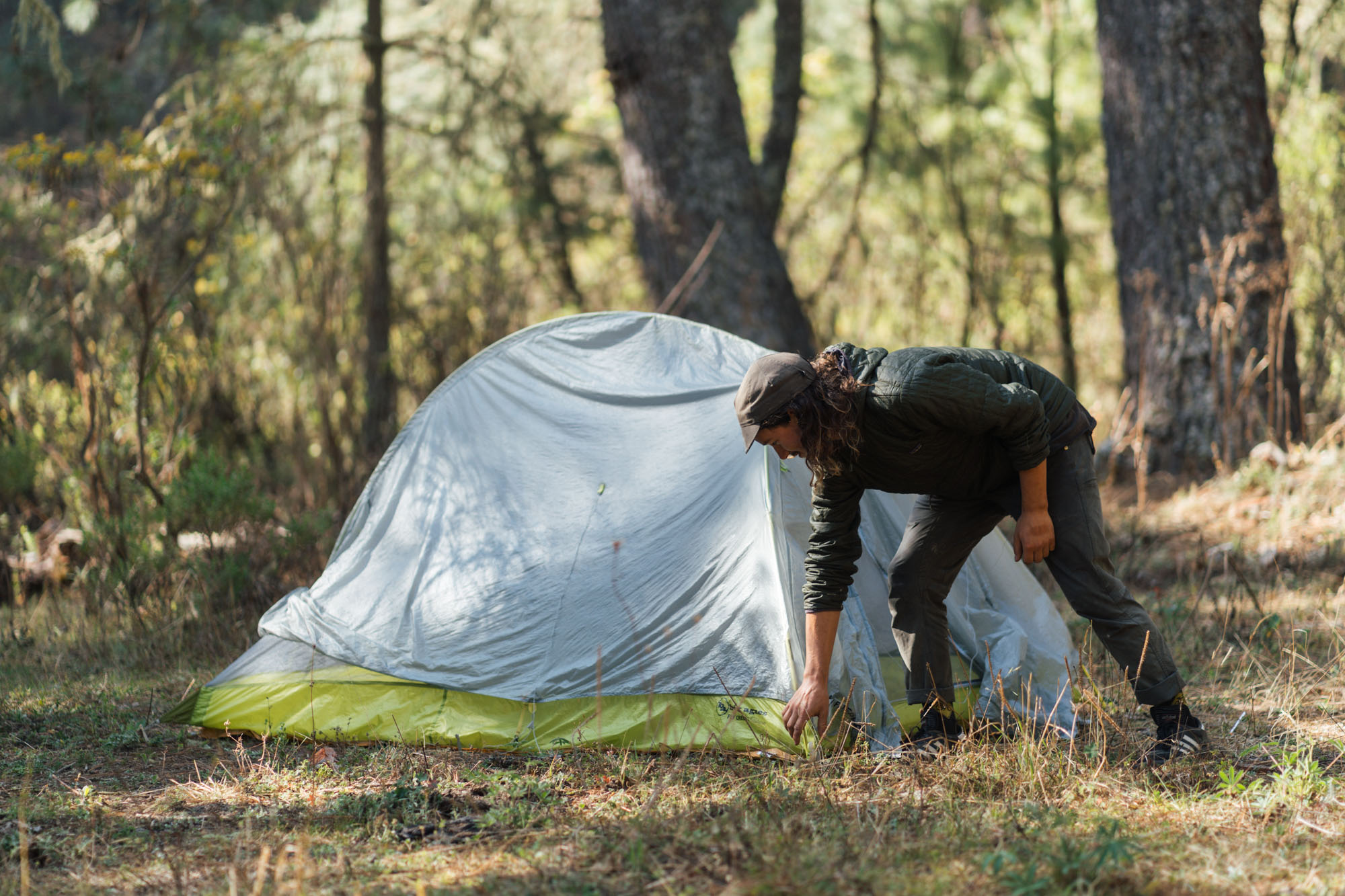
An enclosed tent wards of critters and condensation.
- A fully enclosed tent is generally preferable, due to an assortment of critters, black flies, and mosquitoes at different times of the year. Even in the dry season, there can be high levels of condensation when camping in the valley, and the mountains are often damp and misty.
- Sleeping bags: Despite the high elevations of the Sierra Norte, it’s rare for temperatures to drop below freezing. This said, it can feel surprisingly chilly at 3000m, especially if rain is in the forecast, or when the clouds roll in, so I recommend bringing a 0-5c bag and having extra layers on hand, or choosing a -5c bag if you’re a cold sleeper or expecting damp conditions. Bear in mind that eautiful woolly hats and socks can be bought locally! Packing a sleeping bag liner is useful too. Use it to supplement your quilt when needed, or by itself at lower elevations, particularly as you drop down to the coast and the evenings are humid and balmy. For bikepacking routes that stay in the valleys, you’ll likely be fine with a summer quilt, though there can be some cold snaps, even in the dry season, so a liner is handy to have too.
- Layers: If you’re headed into the mountains, whether it’s the Sierra Norte or the Sierra Sur (in the dry or the rainy season), it’s well worth having a puff jacket in your bags, whether it’s down or synthetic, along with a beanie or woolly hat. Likewise, some sleeping thermals are a good idea, if only to ensure you always have a dry layer after a rainy day. Other than that, it’s very much down to personal preference, though anyone who gets cold hands should consider thin gloves.
- Waterproofs: I tend to pack a windbreaker and a light waterproof in the dry season, as occasional storms can roll through, and bring full-on waterproofs in the midst of the rainy season. We find that ponchos work great for around camp, and can double up as bike covers to protect drivetrains from rusting.
- Footware: For general touring and day rides in Oaxaca, I’m a big fan of riding in sandals and platform pedals, be it in the dry or season. If you’re tackling one of the more techy bikepacking routes, closed shoes are more appropriate, due to all the roots, rocks, and spikey things!
- Stoves and camping fuel: Given that tasty and affordable food is easy to find in Oaxaca, it’s relatively easy to ditch your stove, for those who prefer to travel light. However, I always pack a stove for maximum camping vibes, morning coffee, and more flexibility. If you’re running an alcohol stove, ask for alcohol industrial in a hardware store (ferreteria), where it’s often available to buy in bulk (approx 40 pesos per litre). Within Oaxaca City, we procure ours from a small tlapaleria next to a paleteria (ice cream parlour) behind the Zocalo – find it on googlemaps here. Alternatively, alcohol pura (typically sugar cane, look for the 96° one, often with a red cap) is easy to find in pharmacies and tiendas, though it’s a bit more expensive. Technically, it should burn well, but we’ve come across stubborn batches that are probably mislabelled. You can buy compressed camping gas bottles in the city – the shop is called La Gran Montaña and it’s on Miguel Hidalgo. As far as I know, there’s nowhere to recycle these bottles locally. If you’re after high-end camping gear, this is your place – prices are a bit higher than the US, but there’s a good selection of gear.
- Dehydrated meals: As mentioned above, it’s easy enough to resupply locally, as you ride. However, I’d recommend bring a few dehydrated meals from home too, particularly for mountain routes where resupply options are more limited, and packing light is key.
Oaxaca is often either toasty hot or it’s raining! It rarely gets too cold, except in the mountains, which makes platform pedals and sandals a great choice for dirt road touring here.
Drinking water and hydration tactics on the road
- Tap water in the city of Oaxaca isn’t for drinking; most hotels and Air B&Bs will supply water from big, reusable garrafones, or use some kind of filtration system. Outside of the city, it’s always worth asking; in many mountain villages, the water is considered clean, and there are a number of springs in the Sierra Norte and the Sierra Sur which we drink from unfiltered. This said, if you’re coming from afar, it’s best to err on the side of caution and filter water if in any doubt.
- To avoid buying single-use plastics, your best bet is to allow for 4l or more of H20 carrying capacity on your bike (depending on the time of year). You can source clean water in the mountains (use your filter to be on the safe side) and fill up your bottles/bladder from a garrafone when it villages and towns. Garrafones are generic, 20l water bottles and are available in many small stores throughout Mexico. They’re re-filled rather than recycled. You won’t need to buy the bottle itself – just explain to the storekeeper that it’s only the water that you’ll need, and you’ll be returning the bottle straight away – it should cost between 18-30 pesos per garrafone. This tactic works best with couples or as a group, but even as a solo rider, it’s way both more eco-friendly and more economical than buying smaller plastic bottles. You can also leave any leftover water in the bottle for the storekeeper.
- If you’re in a restaurant, you can ask to top up your bottles – it’s best to offer to pay if you’re filling a number of them, as this water will likely come from a garrafone. Otherwise, leave some extra pesos in your tip.
- Additionally, we’ll often order a big jarra de agua fresca (a fresh, watery juice), to keep us hydrated when having lunch in a restaurant. Or, we’ll opt for a soft drink from a glass bottle, as these are also reused.
- Bring some rehydration salts with you, especially in the dry season months when climbing into the mountains can be a sweatfest.
- I pack a 3L Hydrapak within my framebag and a water bottle or two on my handlebars, which keeps everything clean – and if you’re filling them up in a restaurant, they won’t have to deal with crud and dust! Nalgene/Klean Canteens work well under the downtube but they do tend to get dusty and dirty.
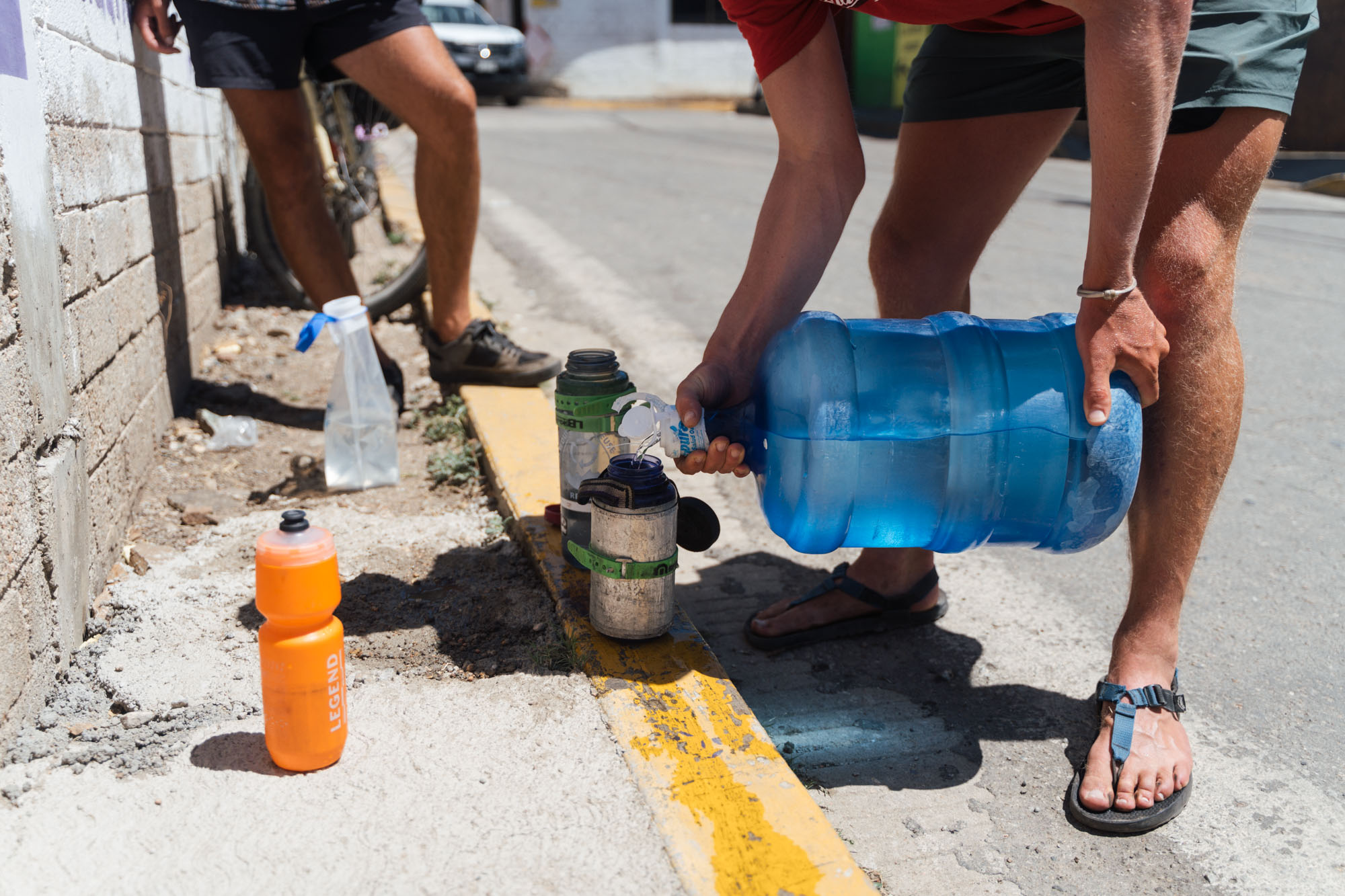
Decanting water from a 20l garrafone into the bottles and bladders you carry is both eco-friendly and economical.
Other important considerations
- Water in the city: Oaxaca’s population has far outgrown its infrastructure and the city has been experiencing a water crisis for a number of years. It’s very common to see pipas delivering water across town to make up for the shortfall, and households regularly run out between deliveries. This situation is exasperated by tourism, so be extra mindful of your water use when using bathrooms and showers. 2024 is slated is expected to be an especially challenging year across the entire state. See here for more info.
- Dogs: Mexico is overrun with street dogs so you can expect to find them loitering and lounging in the shade in Oaxacan towns and villages. Some of them are more vocal than others, so bring earplugs when camping! Invariably, there are always a few who like nothing more than to take up chase, some more aggressively than others. To fend them off, we’ve found the best practice is to either stop, pick up a rock, and pretend to throw it, or make a sharp, loud ‘tzztzztzz’ sound. That’s what the locals do and it normally works well.
- If you get bitten: Although very rare, this can happen. Clean the wound well with soapy water or iodine, and bandage it so nothing gets in there, especially if you’re out on a trip. We recommend going to a pharmacy as soon as you can and explaining the situation – they will likely suggest a short course of antibiotics. Alternatively, many towns have health centres that you can visit for a small fee. Thankfully, there hasn’t been a case of canine rabies for a number of years – see this article for more details.
- If you’re a dog lover and would like to help out, there are a number of dog shelters in the area, including Caravana Canina and Friends of Megan, both of which can help with the logistics of adopting an Oaxacan dog. If you’d like to help financially, you can also take part in hikes with rescue dogs.
- Safety: Generally speaking, the mountains of Oaxaca are a safe place to travel through, but it’s always worth seeking up-to-date information and taking the usual precautions – be discreet with your money, don’t flash an expensive phone or camera around, and camp out of eyesight. There’s no reason why you should feel worried as a solo traveller, either. Unfortunately, however, there have been increasing reports of robberies in Oaxaca de Juárez itself, both in the city centre at night and on a few of the local trails during the day. If you’re out late, take a taxi home. In terms of riding, hiking, and running in areas close to the city, be especially mindful in Cerro del Fortín, the cross at Torre de Microondas, and the very top of the Libramento Norte (before the road drops down in Viguera, as used by some of our bikepacking routes and day rides into the Etla Valley). Keep an eye out and don’t linger; find a map of these areas here.
- Bike safety: Out on the road, most restaurants are amendable to bikes being brought inside or being left within eyeshot. Theft is rarely an issue in the pueblos and I personally don’t carry a lock on my trips here. At most, I’ll lash our bikes together at camp, or make them awkward and noisy to grab in the night. Within the city, however, it’s becoming more of a problem. I’d recommend leaving your bike in your hotel and walking around the city, to save having to haul around a stout lock. Unfortunately, I’ve occasionally heard of a few people having stuff taken from inside framebags when bikes are locked up on the street.
- Critters: There can be mosquitos, black flies, and occasionally poison ivy, so packing some Benadryl if you’re sensitive to any of these can be useful. We’ve spotted brown recluse spiders too, as well as rattlesnakes, so an enclosed tent is recommended.
- Money matters: Try and break 500 peso notes into small bills in one of Oaxaca’s banks before heading into the backcountry, as small stores and restaurants will have trouble changing them.
Shops, rentals, trails, shuttles, guiding services, and resources in Oaxaca de Juarez
- Bike shops: Bicimundo and Zona Bici are well stocked and both have shops in Reforma, which are recommended over their branches in the city centre for parts and repairs. Expect to find sealant, modern drivetrain components, and a reasonable selection of mountain bike tyres, right up to 29 x 2.5/2.6. In Centro, there’s a big Zona Bici and a number of other shops nearby, like the Hub Cycle Store, that also comes recommended. Up in Ejido Guadalupe Victoria, our local shop, Nawals on Bikes, does a fantastic job with servicing and repairs, and in San Felipe del Agua, La Cleta y el Cafe is recommended too.
- Storing bike bags and boxes: If you need to store a bike bag or box, ask your hotel or Air B&B in advance to see if they can help. Many are amenable if you book a night or two at the end of the trip. Compact or foldable bike bags – my very favourite is the Ground Effect Tardis – make things a lot easier, both for storage and travel to and from the airport.
- Bike boxes: If you need a bike box to travel home, Zona Bici in Reforma is a good bet, as they sell a fair few high-end, full suspension bikes, that often come in big bike boxes. There are three Zona Bicis in town – I tend to use the one in Reforma.
- Bike rentals: Aside from the full suspension bikes provided by tour companies for their enduro tours, Bicicletas Pedro Martinez is probably the best place to rent a bike suitable for dirt road riding here. A decent Orbea hardtail costs 500 pesos for 24 hours. Otherwise, pop by Bicibella Oaxaca, below Coyote tours. They may be able to set you up with something too; their selection is a bit more eclectic and tends towards smaller-size bikes, but it’s definitely worth checking out. We recently heard of a new place called Bike Flow (Mártires de Tacubaya 101, +52 442 285 9052) with decent hardtails – and the bikes come with a MIPS helmet, lights, and a lock. The owner is super friendly and helpful, too.
- Local trails: A short ride from the city centre, the trail network west of San Felipe Del Agua has a network of cross-country singletrack – see Trailforks for details, though note that a number of these trails are now closed due to land purchases, and read the Safety post too. There is also an abundance of steep cross-country and techy enduro trails in the Ixtepeji and La Mesita zones – the various guiding companies below will be able to help you access them./
- Enduro scene and guiding companies: There are a number of tour agencies that can supply full suspension bikes and take you up to Ixtepeji for the day, including Coyote Adventuras, Trans Sierra Norte, and Bicicletas Pedro Martinez. Coyote and Pedro Martinez also offer more mellow tours around the valleys.
- If you’re after a trail guide, drop Gerardo Garcia a line (Whats App +52 1 938 152 7555). He speaks great English and can take you on all kinds of cross-country and enduro rides, straight out of the city. Gerardo has some extra full suspension bikes to rent too.
- Shuttles: For a private shuttle to Ixtepeji, Hugo Yovaneli may be able to help (Whats App +52 1 951 159 5033), or have a chat to Gerardo.
- Additional Resources: MTB Oaxaca is an excellent website that lists bike shops, trails, and day rides in and around Oaxaca. The rides Larry Ginzkey showed me when I first arrived in Oaxaca were the inspiration for much of this blog. Thank you Larry!
Getting here
- Bus: Oaxaca is a six-hour bus ride away from Mexico City. ADO is a recommended bus company and the station is right in town. There’s generally plenty of room for a bike or two (no extra charge), though you may need to remove the front wheel and drop your seat post. The views are great if you go by day (the route crosses the Reserva de la Biósfera Tehuacán-Cuicatlán) but consider a night bus for more efficient use of your time.
- Flights: Volaris, AeroMexico, and a number of other airlines fly to Oaxaca via Mexico City or Guadalajara. There are some direct flights to LA, too. There’s less chance of your bike getting lost if you choose a direct flight. If it has a connection, make sure it’s not too rushed. If you have an iPhone, I think it’s a good idea to pop an Air Tag in there, just to be on the safe side. Airlines invariably have different bike policies – cost/size/weight – so always check ahead. I like to travel with a compact bicycle bag – like the Tardis from Ground Effect – as it fits into smaller taxis and is easier to store in a hotel or hostel.
- Transportation to and from the airport: Depending on the size of your bike boxes or bags, it’s likely to cost between 350 and 500 pesos for a taxi from the airport into town – for 2 to 3 people with bikes. You can buy tickets (cash or card) for the official airport taxis when you arrive (the office is just by the exit) and it’s all regulated – you’ll either be charged for Zone 1 or Zone 2, depending on your hotel. There’s no Uber in Oaxaca, and Didi (see below) isn’t allowed to pick up travelers. If you have a compact bike bag (like the Ground Effect Tardis, see above), you can likely fit it into the collectivo minibus, which drops its passengers off at their various destinations (140-160 pesos per person, depending on the zone). Note that there are also a number of ATMs at the airport – we find Santander the most reliable. For your return, download the Didi App on your phone and book a taxi (you can pay the driver in cash directly, which is preferred, or by card). These are the yellow taxis that you see around town – most drivers are fairly creative and can fit a bike bag/box or two, depending on their sizes. A taxi tends to cost around 200-230 pesos, depending on the time of day. Otherwise, arrange a shuttle through your hotel, guesthouse, or Air B&B. To arrange a van suitable for larger numbers of riders with big boxes, Taxi Oaxaca may be able to help (+52 1 951 200 6878).
Health
- If you hurt yourself, Hospital Reforma, just a few blocks away from Santo Domingo, is a good private hospital that works with insurance companies like AXA. Even if you’re paying out of pocket, the prices are reasonable. If it’s something minor, there are a number of small clinics that offer very affordable care across the city. We’ve had good experiences visiting the Centro de Salud in Xochimilco (59 Dr. Gilberto Bolaños Cacho).
Non-biking info and ideas
- To find out what events are being held in the city, follow the Que Pasa Oaxaca Facebook page. They also publish an occasional digital magazine on the Issuu platform.
- Bulletin boards: there are some good ones outside Boulenc restaurant, Pan Con Madre bakery/cafe, and La Jicara Librespacio Cultural (with adjoining bookshop) advertising local events, workshops, readings, and more.
- Both the historic Zocalo and El Llano are great squares to people-watch in the evening, and soak up the scene, Mexican-style.
- To learn more about Oaxacan textiles, check out the excellent Museo Textil de Oaxaca. It’s in a beautiful building, it’s free to enter and exhibitions are constantly changing.
- Housed in a former convent that dates back to 1529, the neighbouring Centro Cultural San Pablo is also well worth visiting. There’s a coffee shop and various art exhibitions both inside and outside.
- Want to get into the botanical groove? Oaxaca is especially biodiverse and will bring out your inner phytophile. Visit the renowned Jardín Etnobotánico de Oaxaca for a plant primer before you set off. There are 2-hour, guided tours in English and Spanish – check times and arrive early for the English language tour especially. Oliver Sach’s Oaxaca Journal is a fun and engaging read for those interested in learning more about the area, from both a botanical and cultural standpoint.
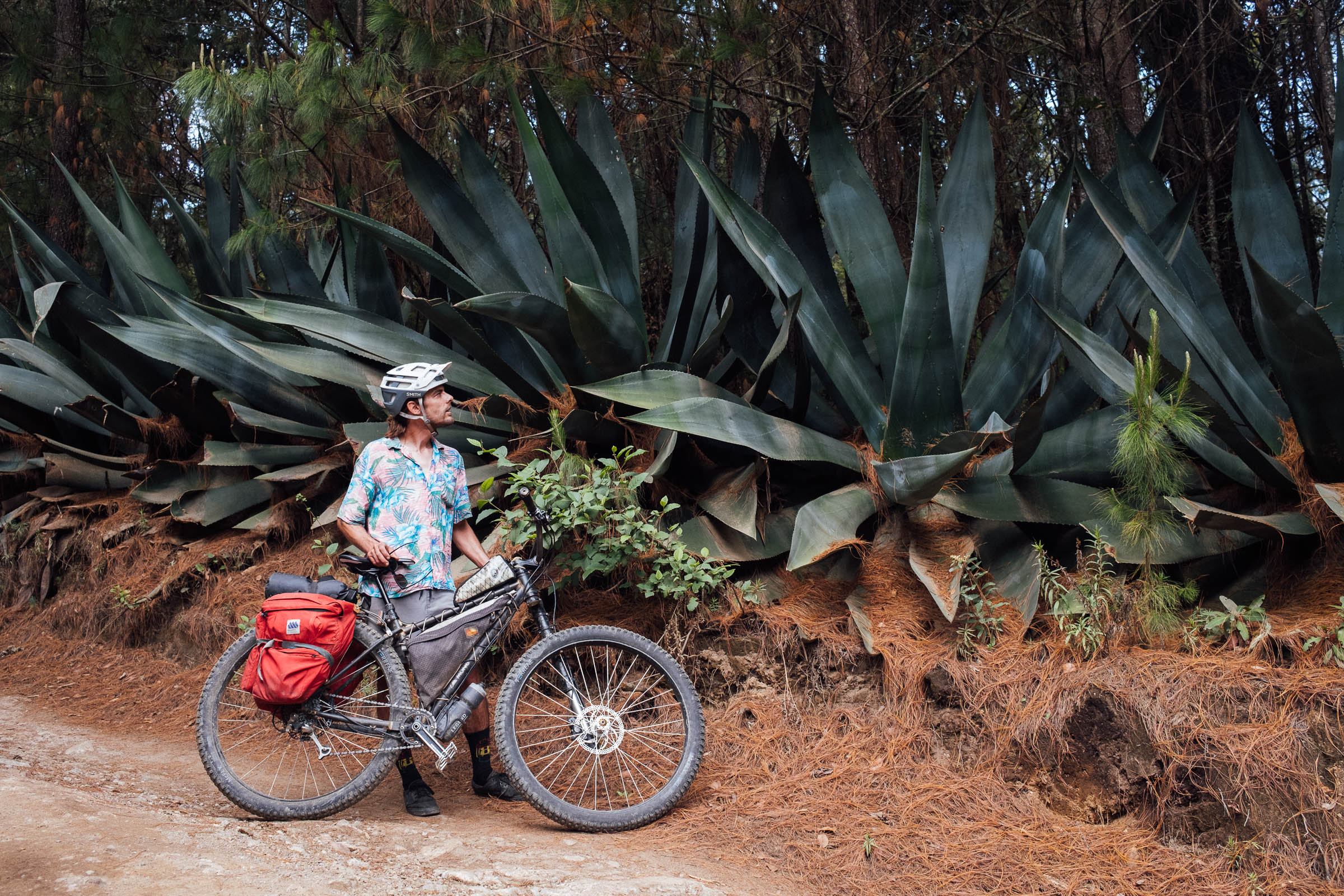
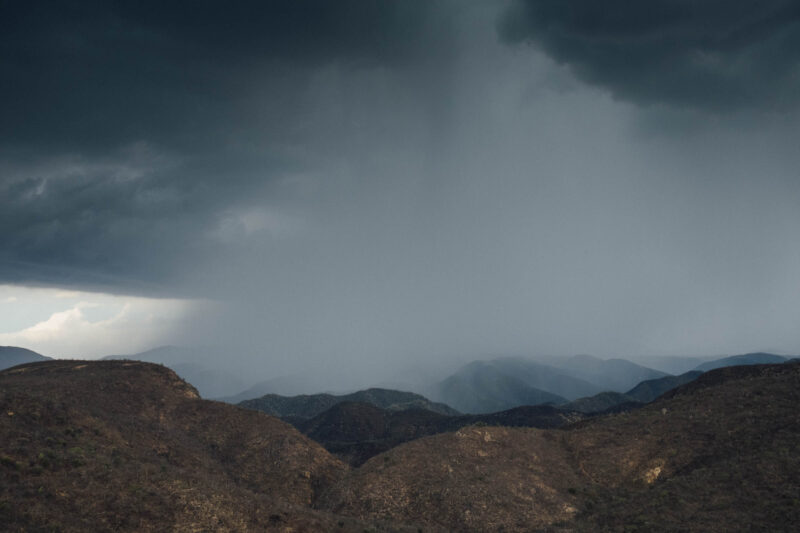
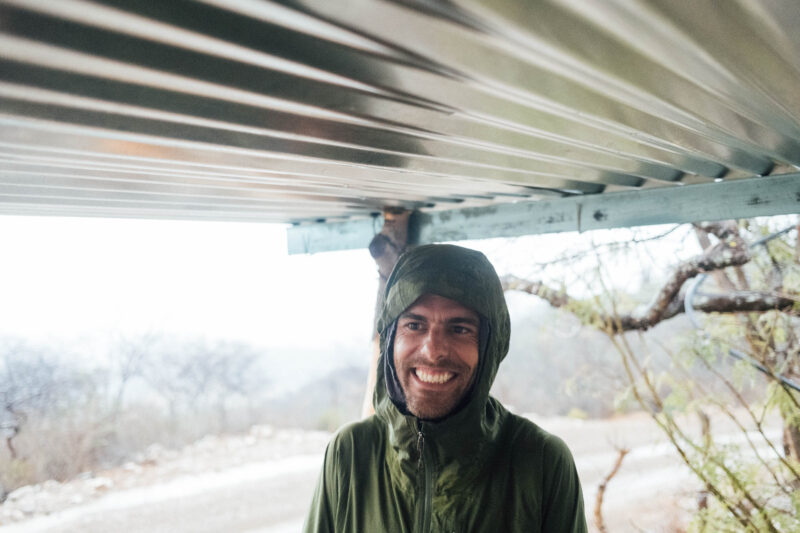
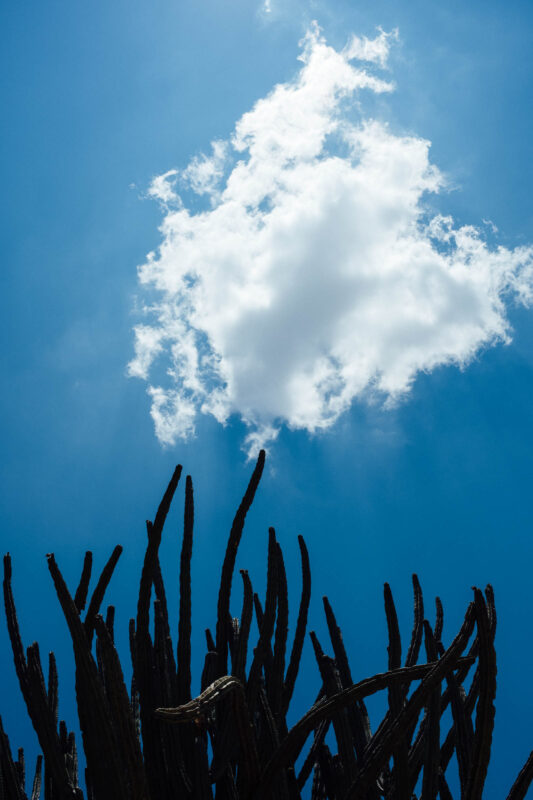
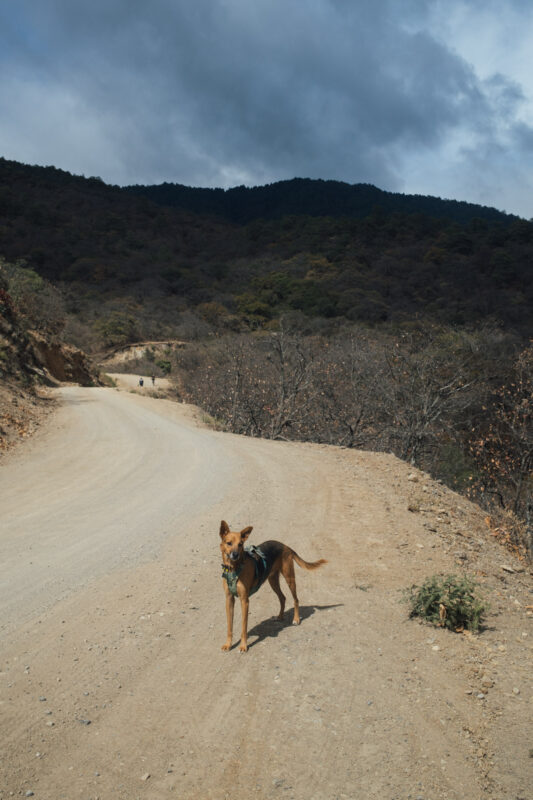
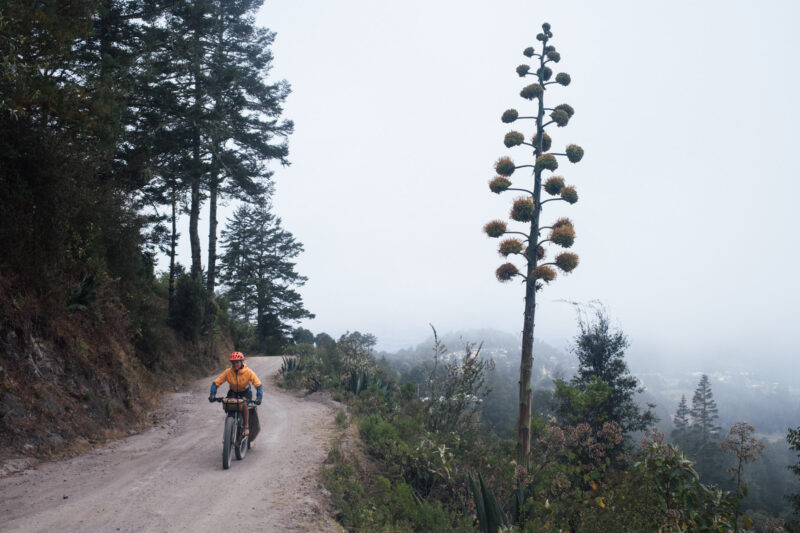
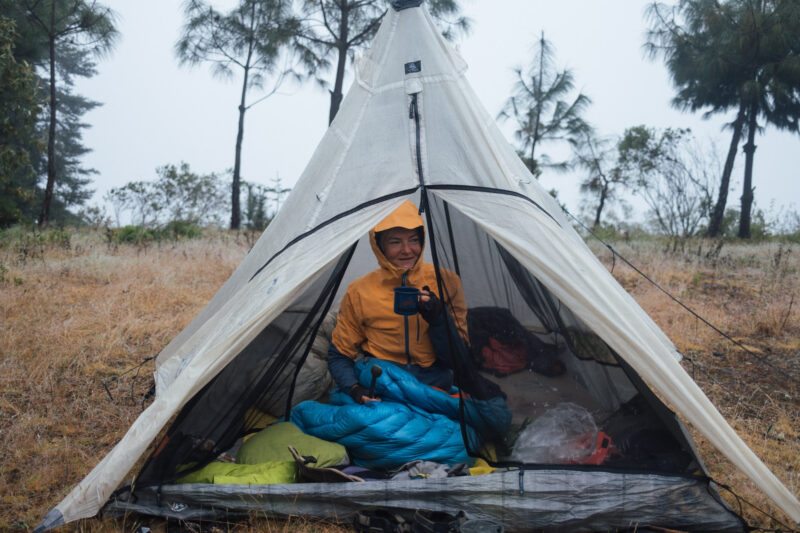
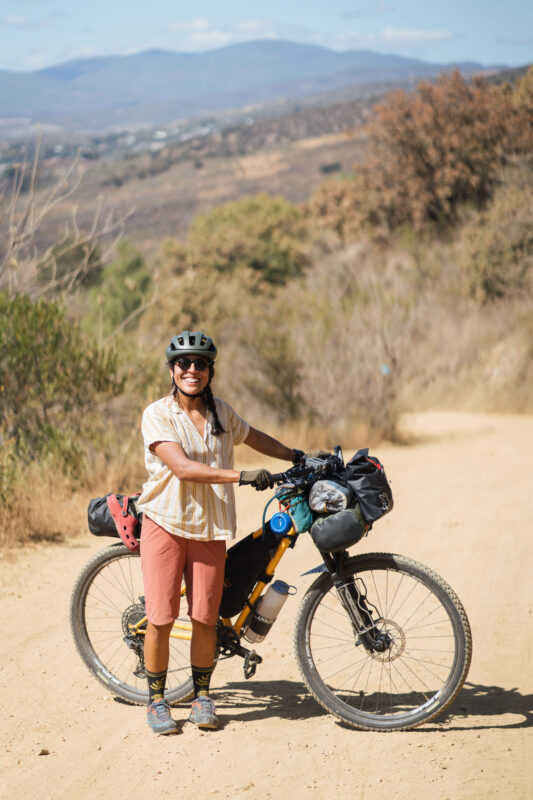
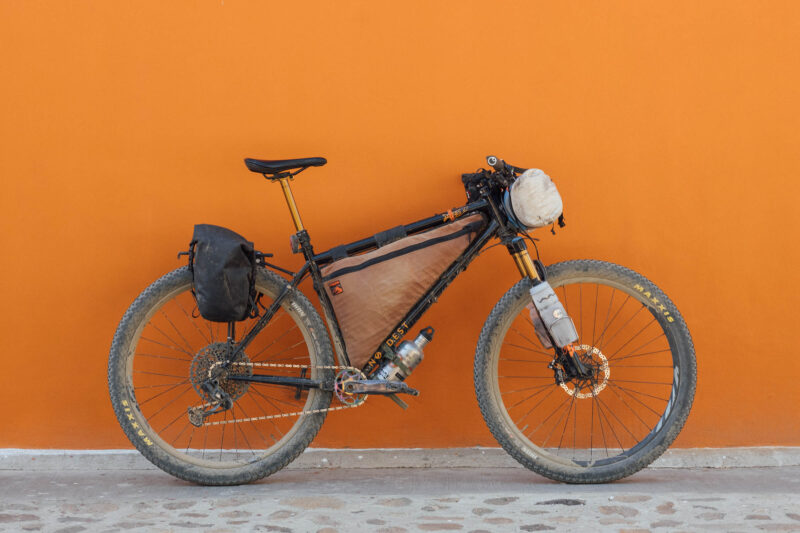
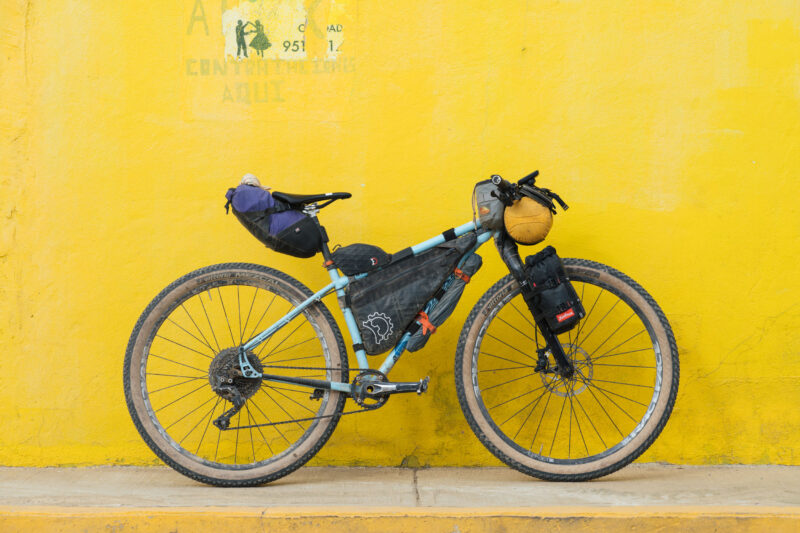
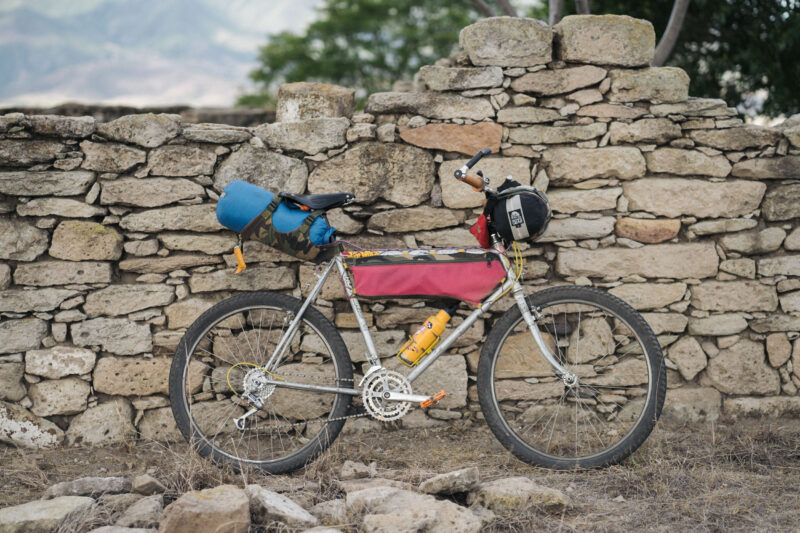
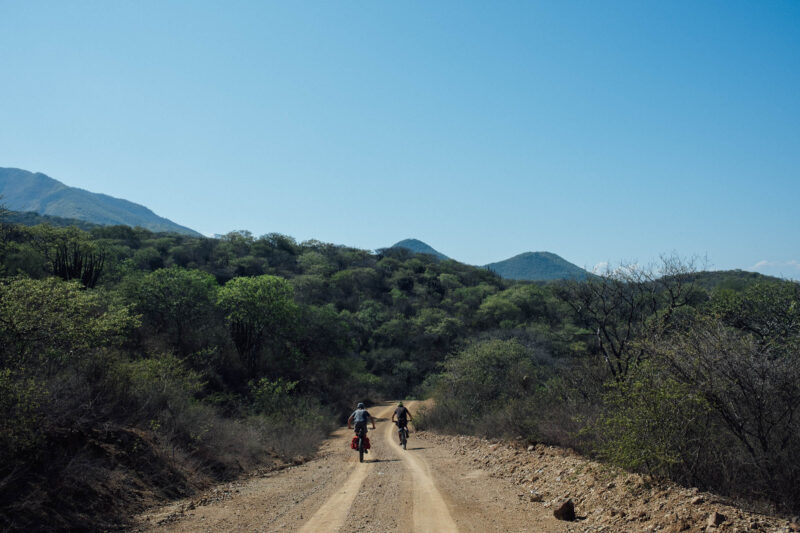
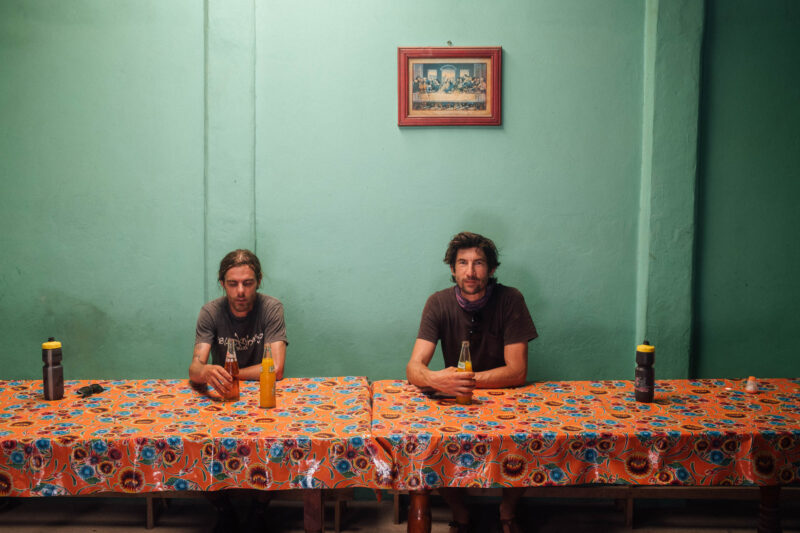
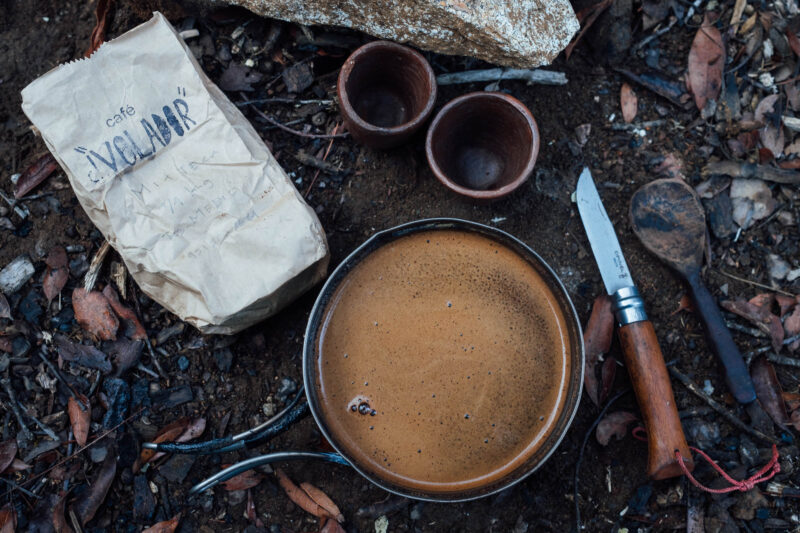
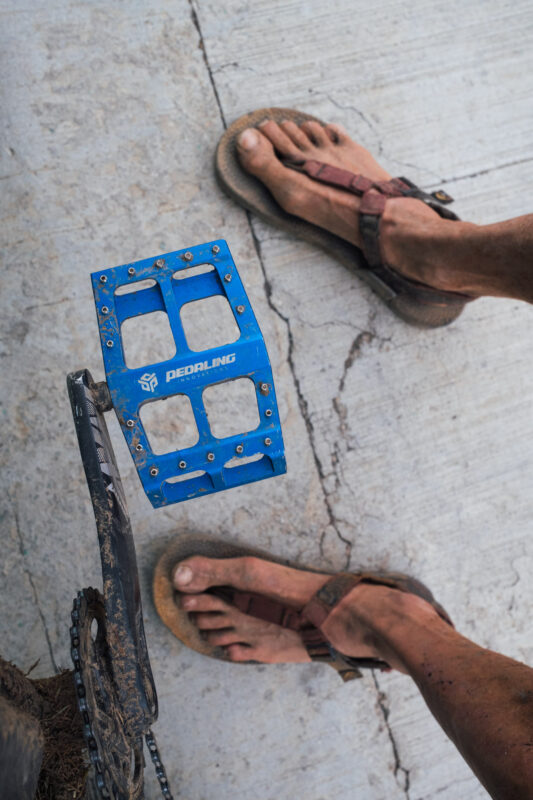
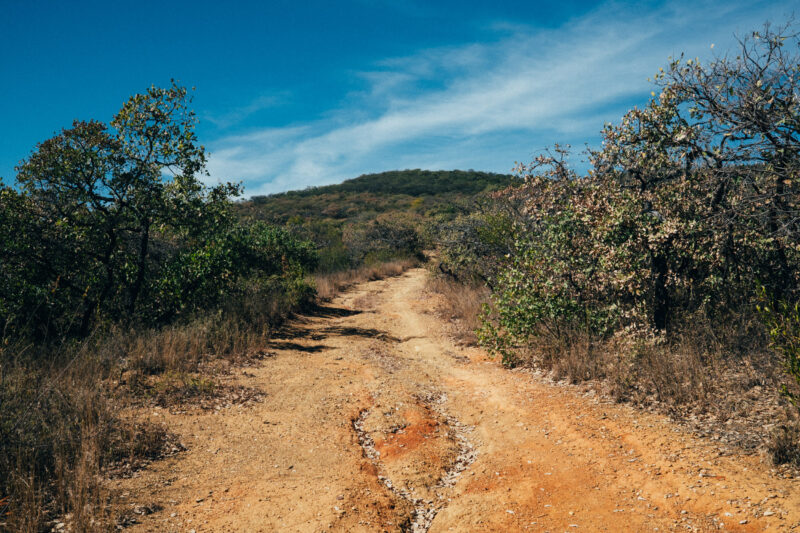
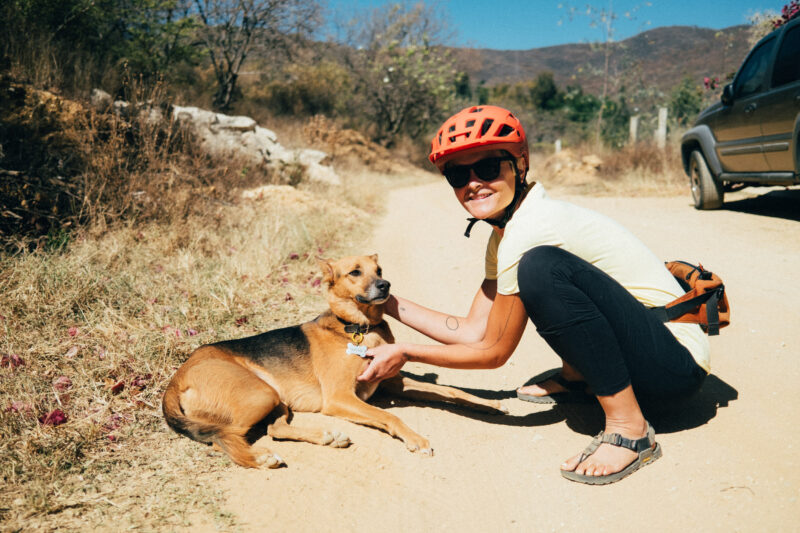
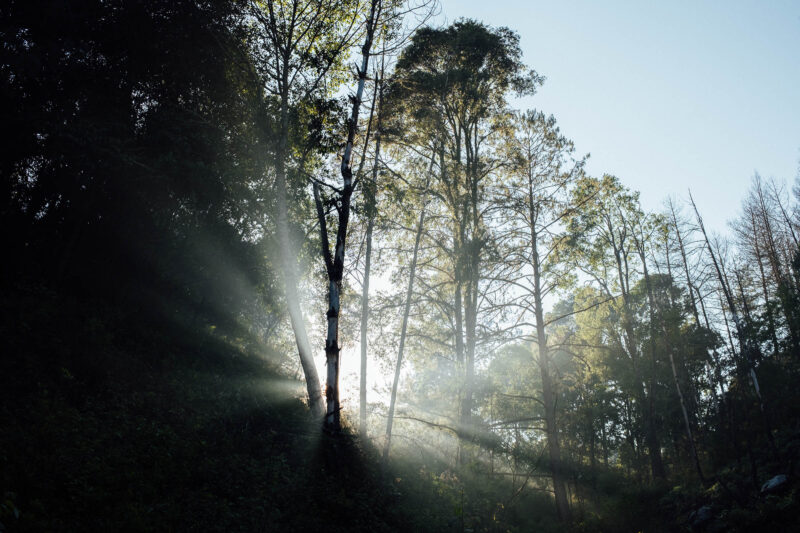
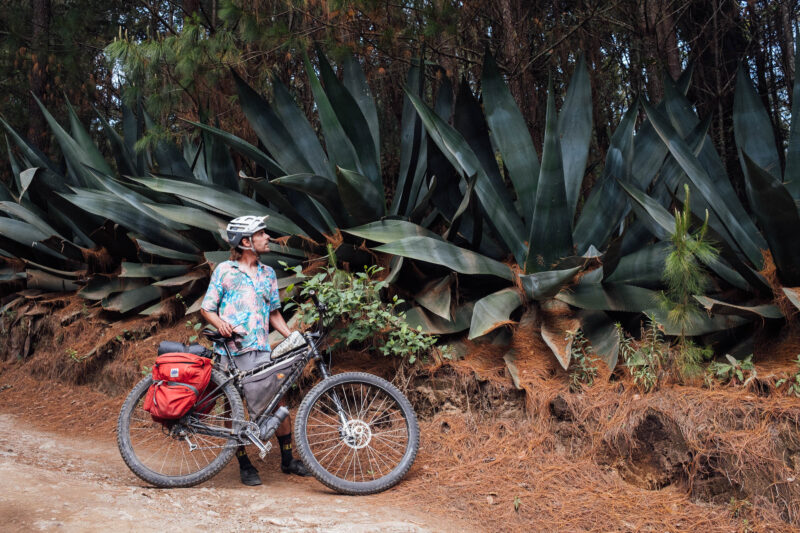
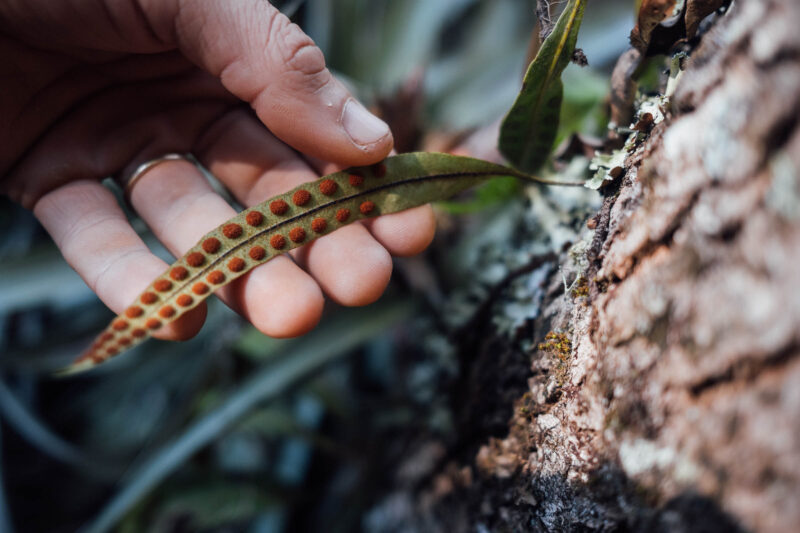
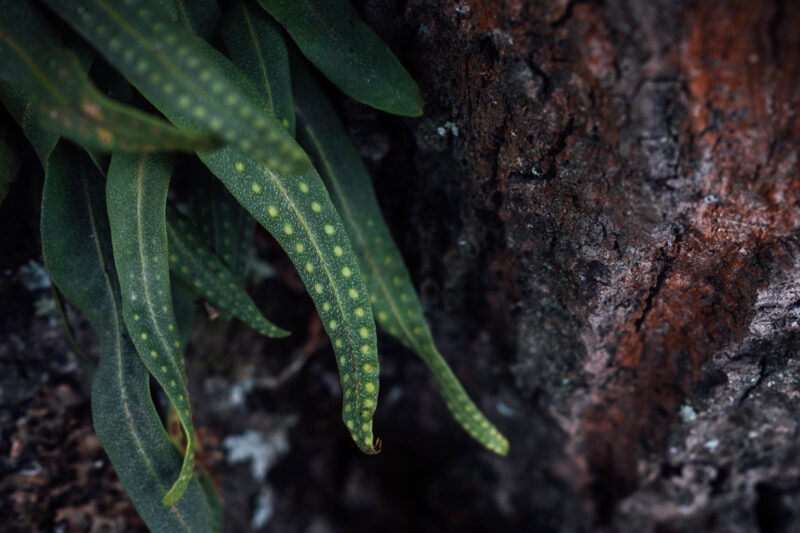
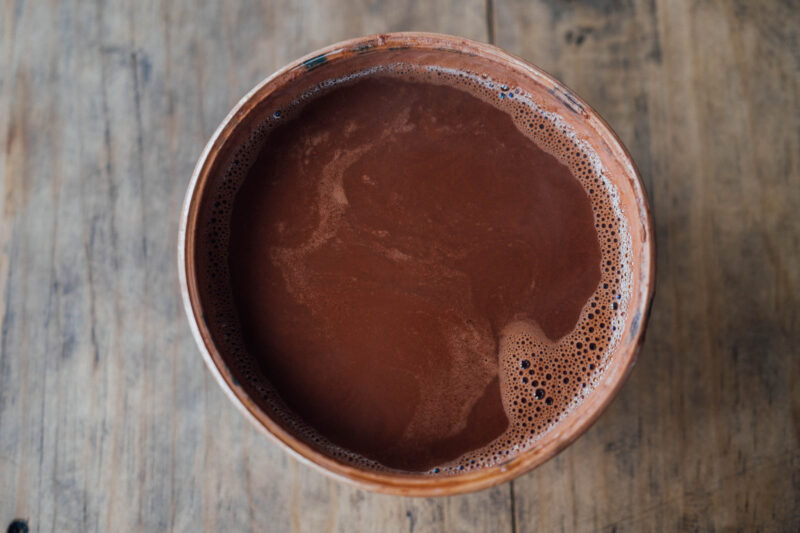
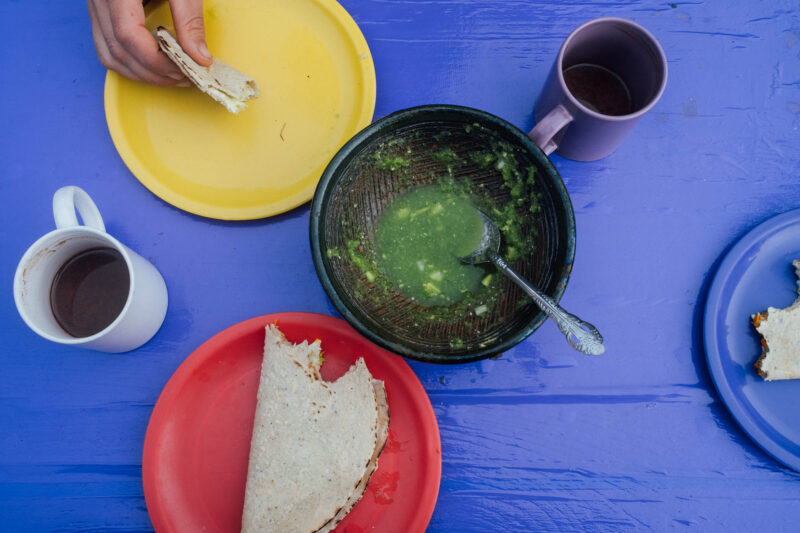
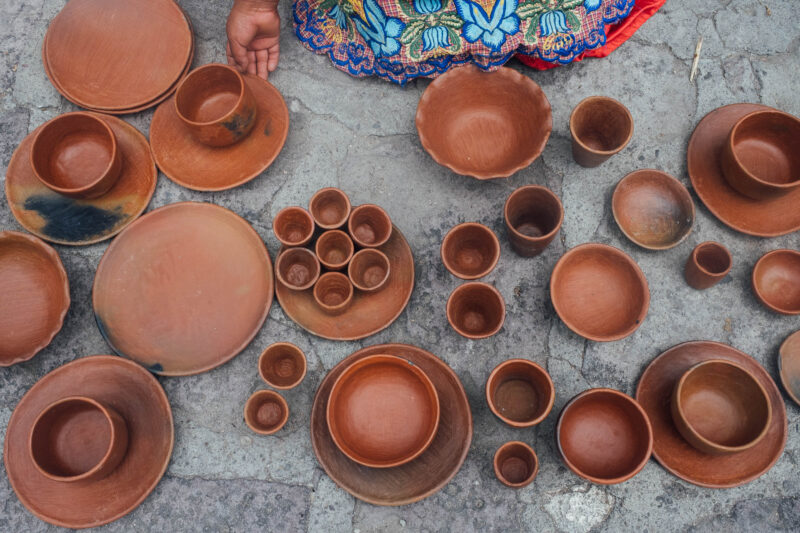
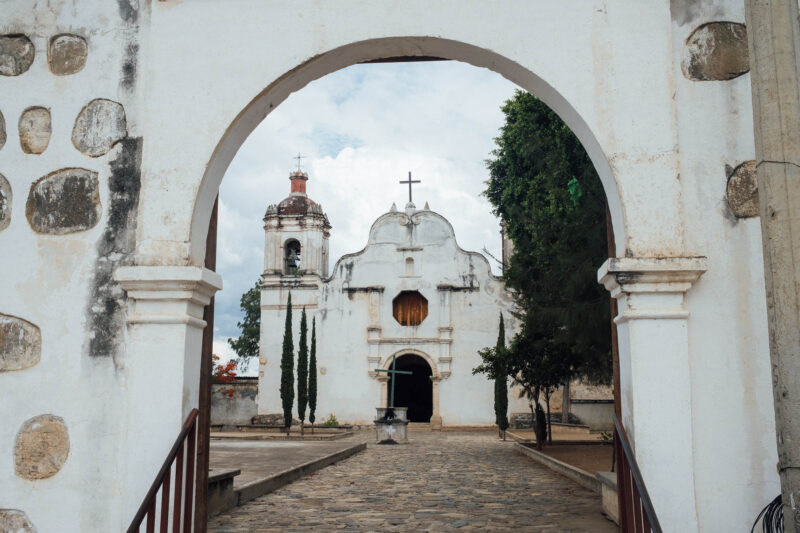
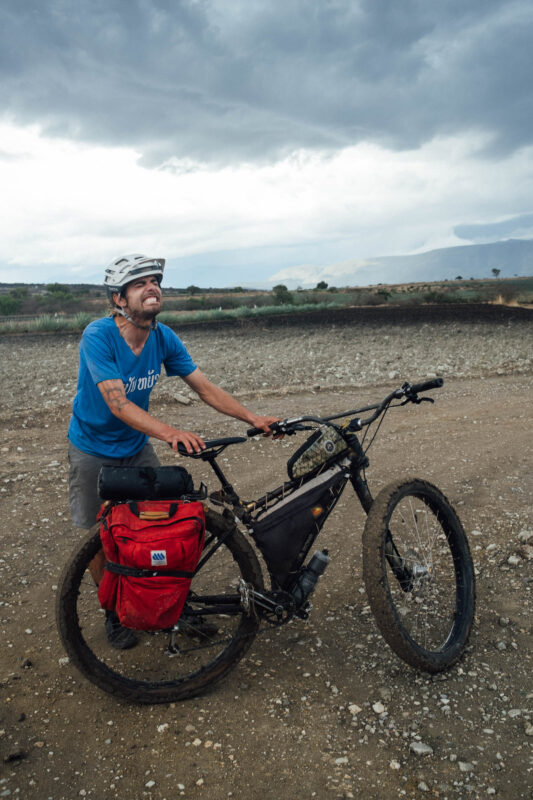
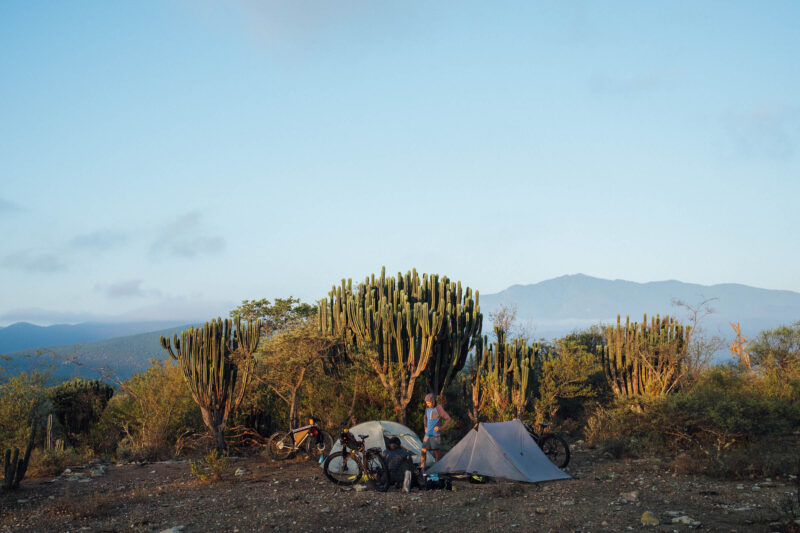
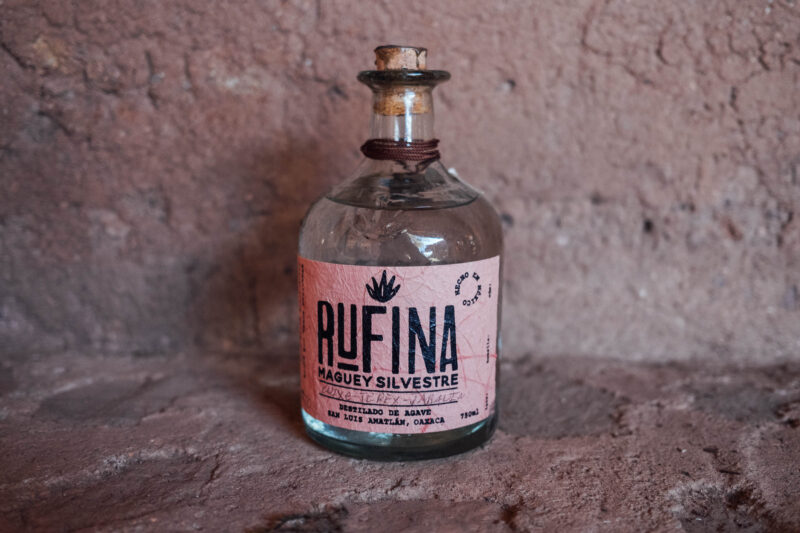
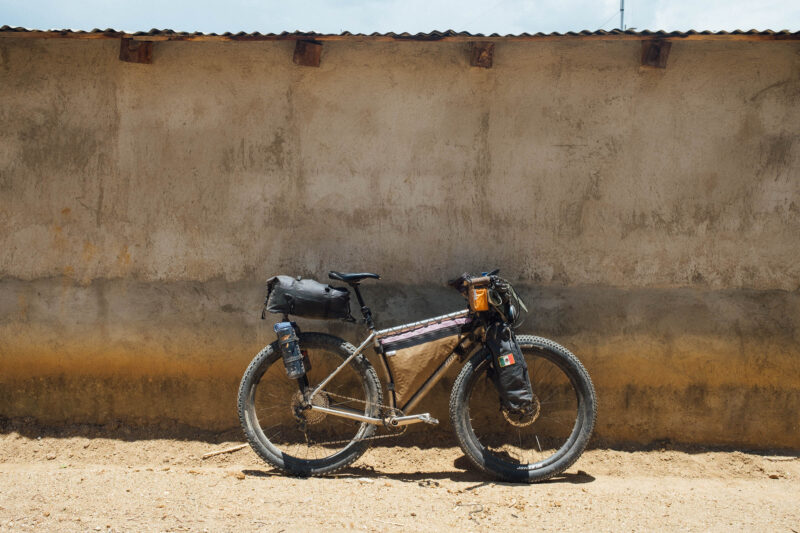
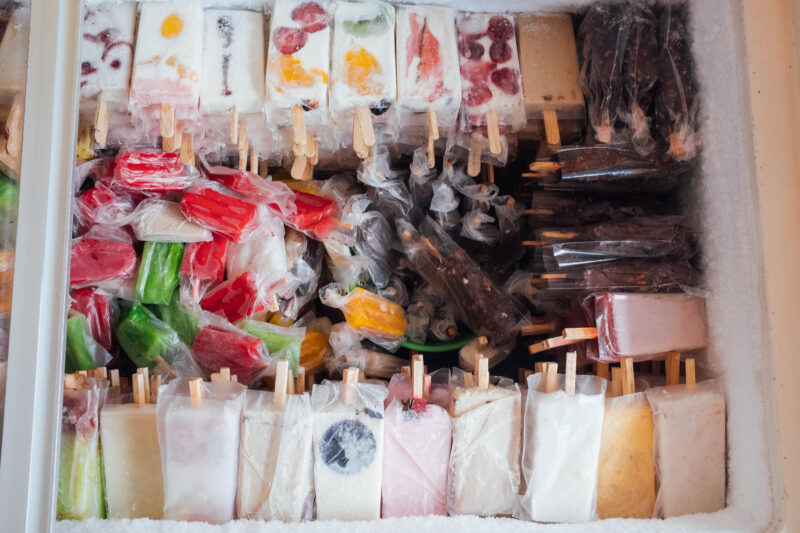
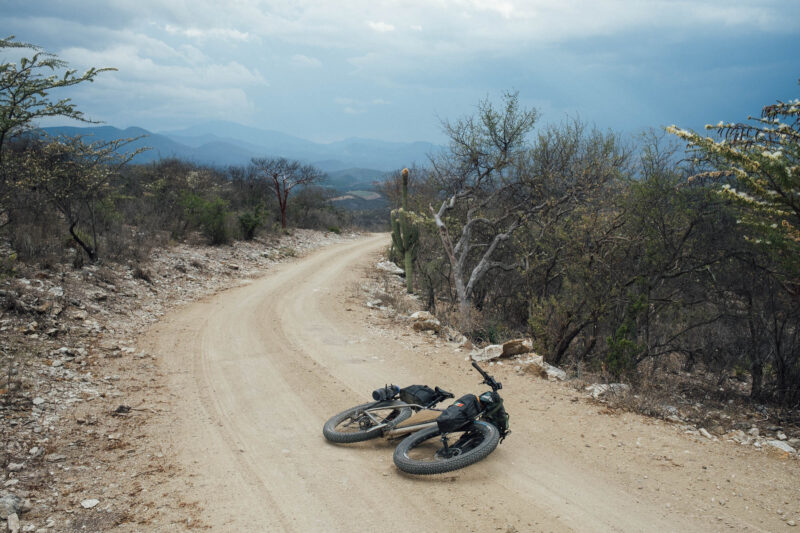
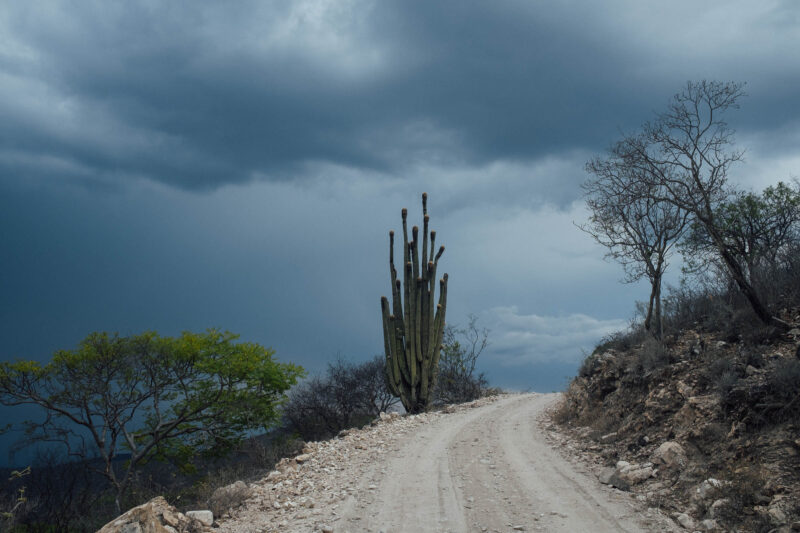
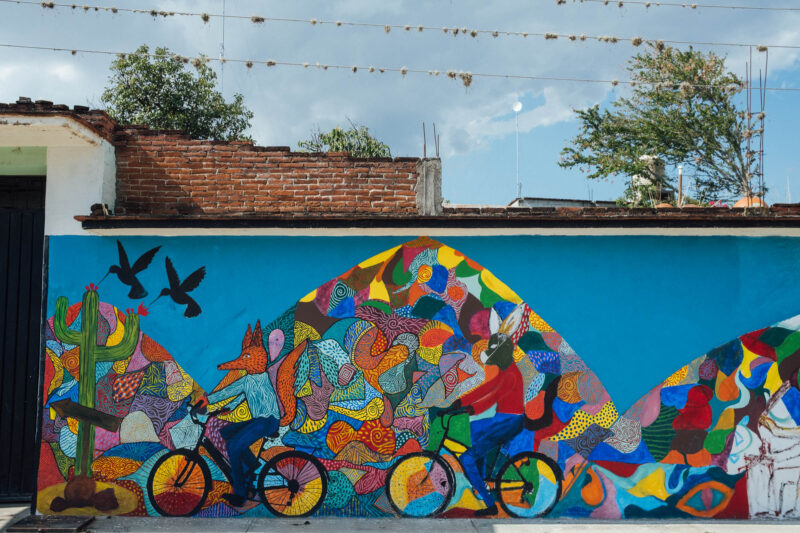
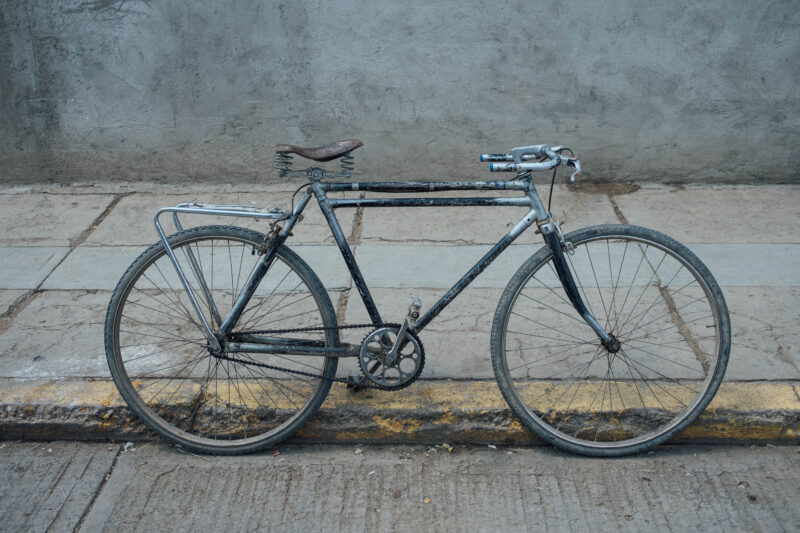
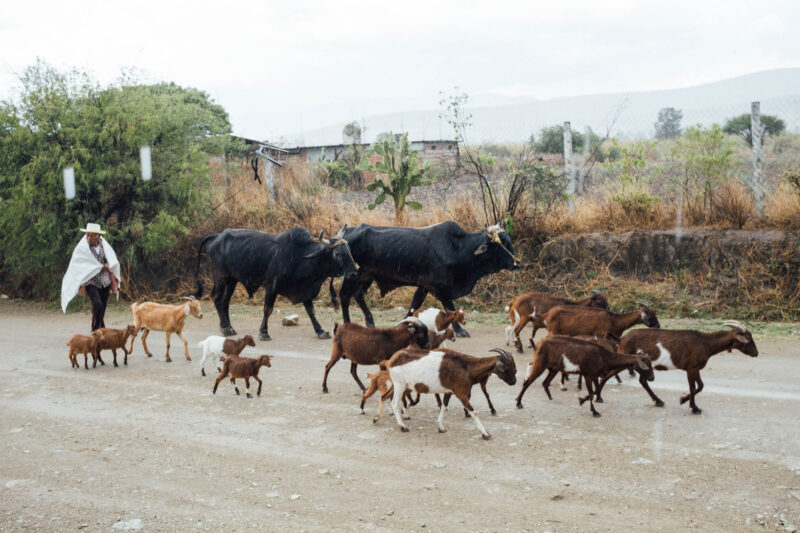
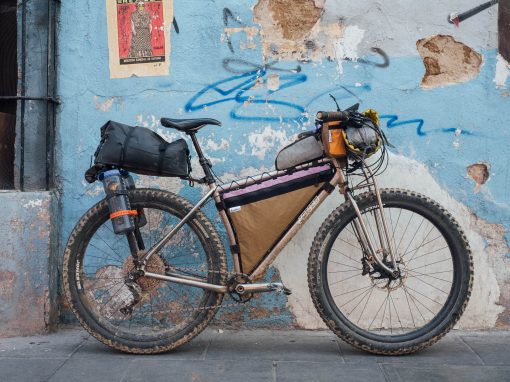
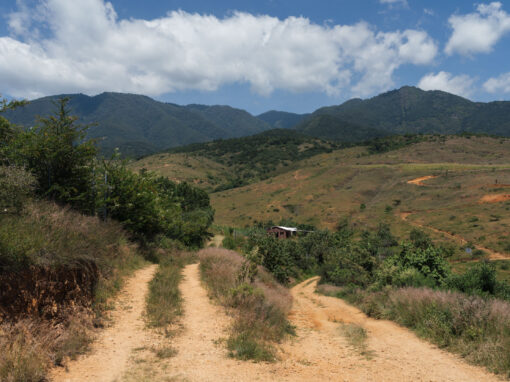
A.J. Kamish
12 September 2023 at 6:10 pm
Hey Cass – I’ll be riding the Grand Dirt Tour route (with an add-on down to Zipolite on the coast) in November and we’re stoked!
I’m seeking some insight about temps/sleeping bags if you wouldn’t mind sharing some insight.
Looking at weather averages would have me believe that it doesn’t get too cool at night, even higher up in places like San Jose del Pacifico and throughout the mountainous parts of the route. I’d like to get by with a super light and small 50 degree bag… but I’m skeptical with elevation.
Any thoughts on temps and the right sleeping bag rating for this route in November?
Thanks!
Cass
18 September 2023 at 10:26 am
Hi A J. That route doesn’t stay up in the mountains for too long, so you can likely get by with a lightweight summer quilt and sleeping in your clothes if needed – or buying some additional warm socks (bought locally in San Jose del Pacifico!). Otherwise, a thin silk liner can be useful, as it can double up for sleeping at lower elevations, too.
This said, my favourite riding in the area is the Sierra Norte, so if you end up heading into the mountains for a longer period of time, I think it’s worth having a bag/quilt that will comfortably take you down to around 5c. Although it can get chilly up at 3000m, it rarely drops below freezing.
Pingback